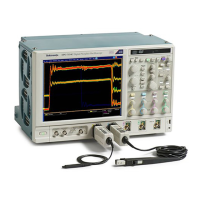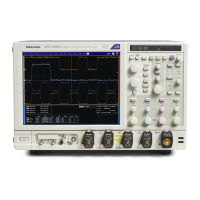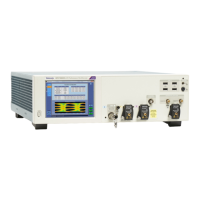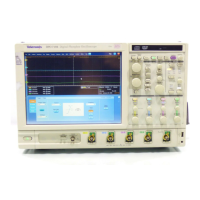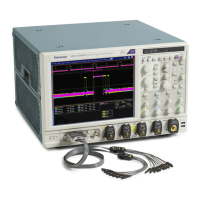Behavior
■
Full provides a grid, cross hairs, and frame on the instrument display. Use Full to make quick estimates of waveform
parameters.
■
Cross Hair shows cross hairs and a frame on the instrument display. This style is useful for making quick estimates of
waveforms while leaving more room on the display for automatic readouts and other data.
■
Grid shows a frame and a grid on the instrument display. This style is useful for making quick, full-screen measurements
with cursors and automatic readouts when cross hairs are not needed.
■
Frame shows only a frame on the instrument display. This style is useful with automatic readouts and other screen text
when other display features are not needed.
■
Use IRE if you are working with NTSC video signals. The instrument sets the graticule to accommodate the vertical position
and scale of the signal.
■
Use mV if you are working with video signals other than NTSC. The instrument sets the graticule to accommodate the
vertical position and scale of the signal.
■
Solid is similar to Full, but the grid, cross hairs, and frame are drawn using solid lines.
TIP. Use the Display menu Graticule Style submenu to directly access the graticule style options.
What do you want to do next?
Learn about changing the overall display appearance.
Learn about changing the display colors.
Learn about using text with screen displays.
Define the color palette
From the Display menu, select Colors, or open the Colors tab in the Display control window.
Display setups
DPO70000SX, MSO/DPO70000DX, MSO/DPO70000C, DPO7000C, and MSO/DPO5000B Series 177

